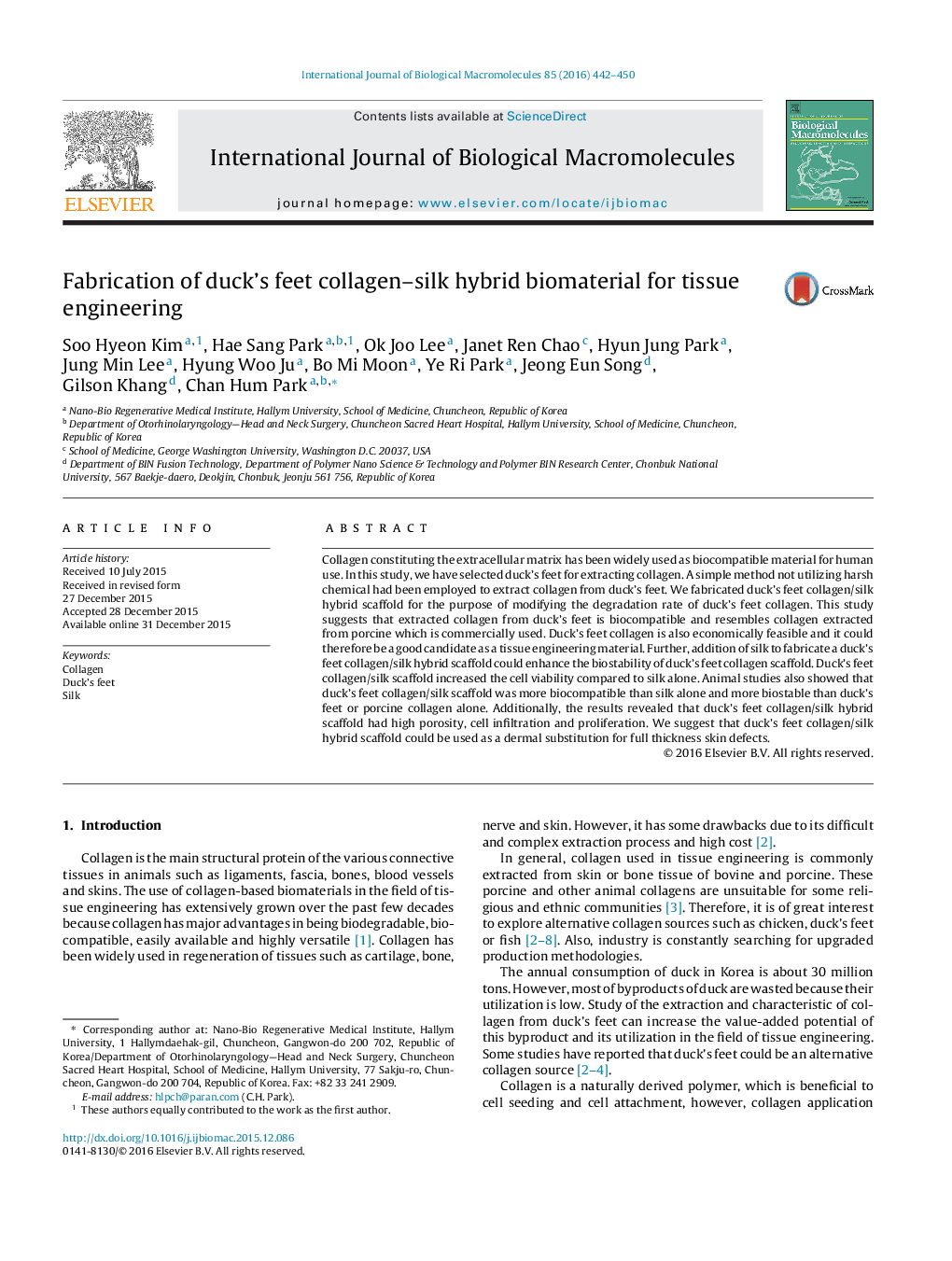| Article ID | Journal | Published Year | Pages | File Type |
|---|---|---|---|---|
| 1985842 | International Journal of Biological Macromolecules | 2016 | 9 Pages |
Abstract
Collagen constituting the extracellular matrix has been widely used as biocompatible material for human use. In this study, we have selected duck's feet for extracting collagen. A simple method not utilizing harsh chemical had been employed to extract collagen from duck's feet. We fabricated duck's feet collagen/silk hybrid scaffold for the purpose of modifying the degradation rate of duck's feet collagen. This study suggests that extracted collagen from duck's feet is biocompatible and resembles collagen extracted from porcine which is commercially used. Duck's feet collagen is also economically feasible and it could therefore be a good candidate as a tissue engineering material. Further, addition of silk to fabricate a duck's feet collagen/silk hybrid scaffold could enhance the biostability of duck's feet collagen scaffold. Duck's feet collagen/silk scaffold increased the cell viability compared to silk alone. Animal studies also showed that duck's feet collagen/silk scaffold was more biocompatible than silk alone and more biostable than duck's feet or porcine collagen alone. Additionally, the results revealed that duck's feet collagen/silk hybrid scaffold had high porosity, cell infiltration and proliferation. We suggest that duck's feet collagen/silk hybrid scaffold could be used as a dermal substitution for full thickness skin defects.
Related Topics
Life Sciences
Biochemistry, Genetics and Molecular Biology
Biochemistry
Authors
Soo Hyeon Kim, Hae Sang Park, Ok Joo Lee, Janet Ren Chao, Hyun Jung Park, Jung Min Lee, Hyung Woo Ju, Bo Mi Moon, Ye Ri Park, Jeong Eun Song, Gilson Khang, Chan Hum Park,
